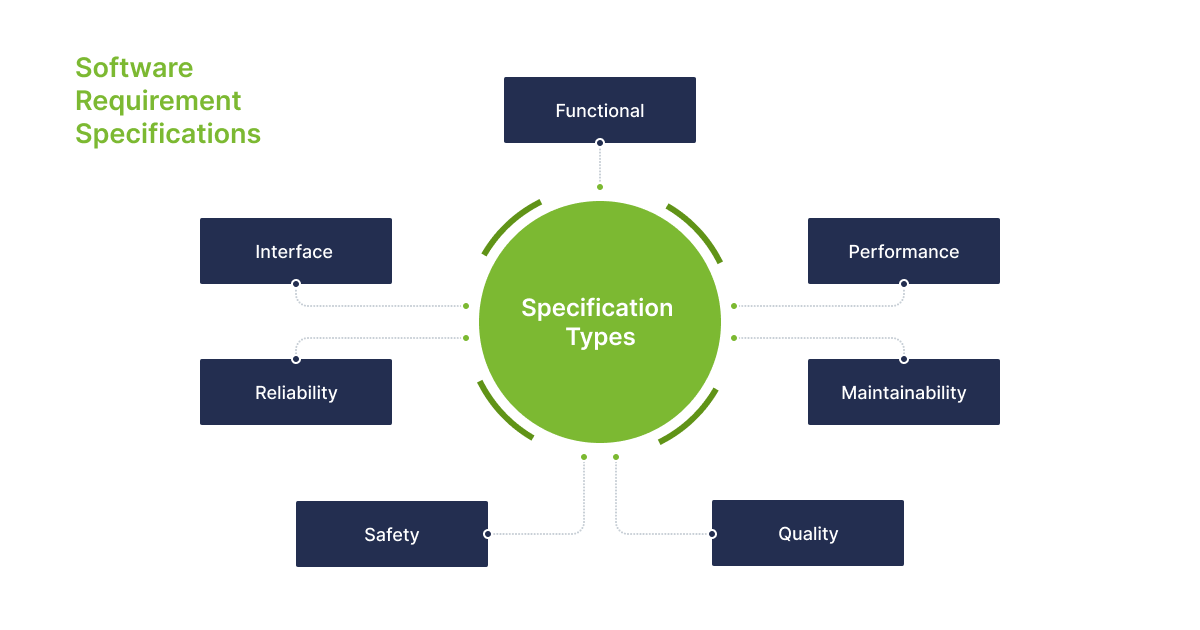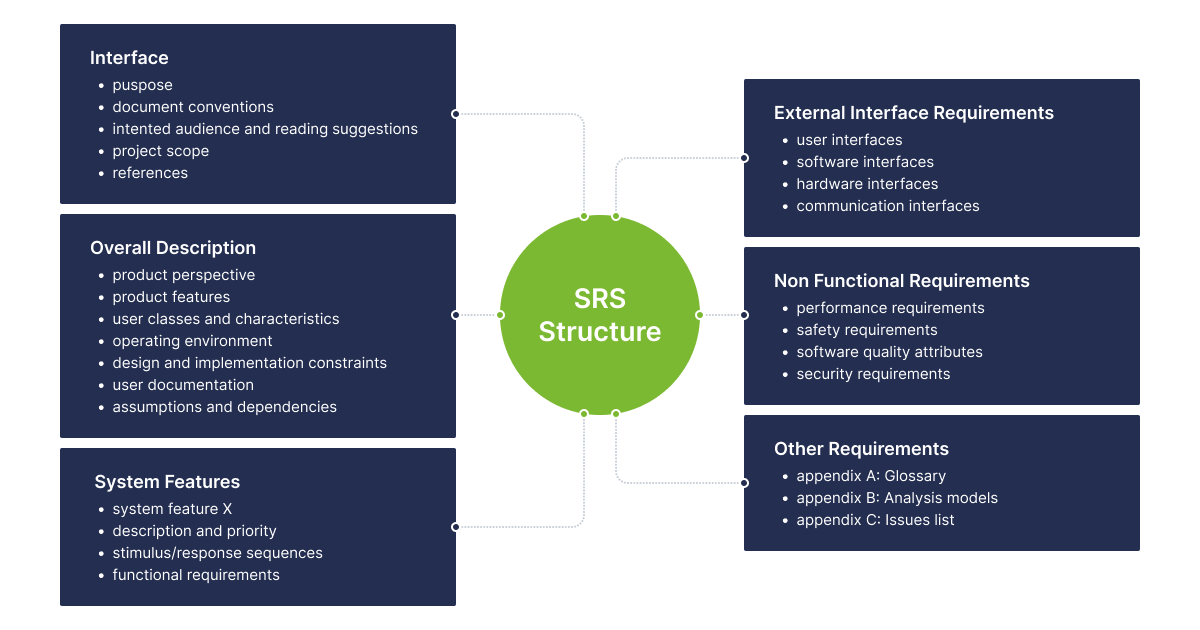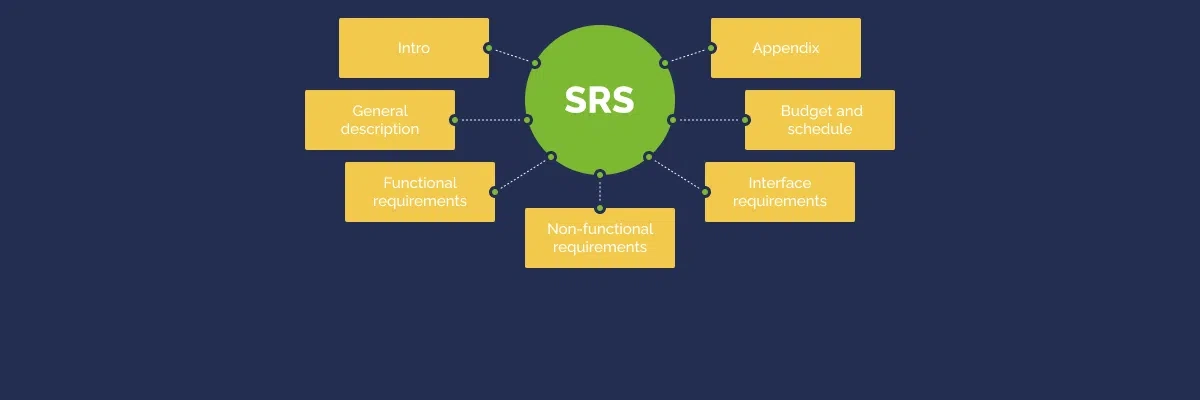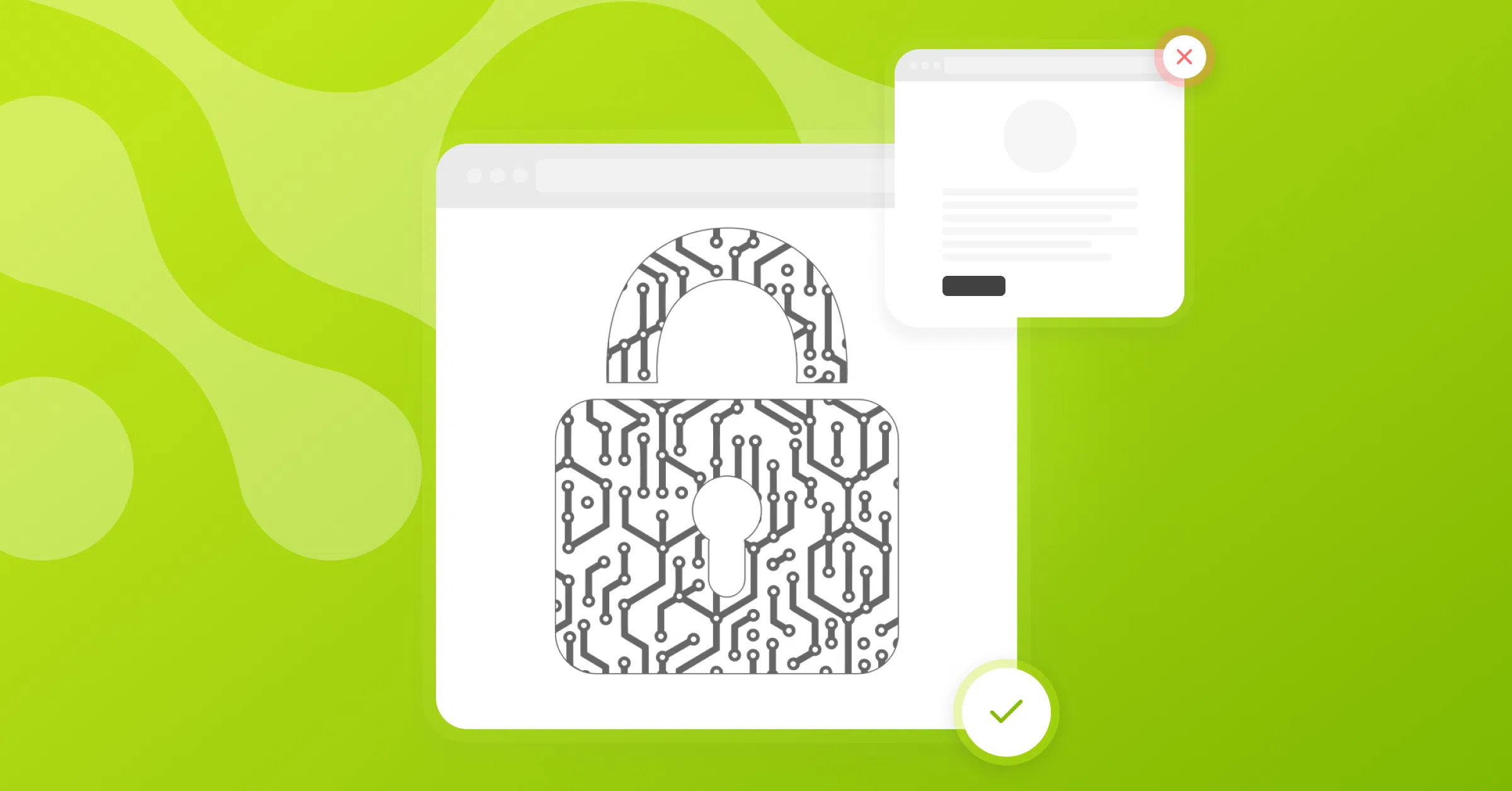Software Requirements Specification and Its Key Components
Providing business analyst activity in IT company is essencial to keep up with the last technology novelties of the industry, its market trends and to be known for the popular and recognized research of the industry. However, awareness of BA`s basic rules, methods, and instruments are no less important. Especially, if you have just started…
One of the main activities of a BA is work with requirements. From one side BA, communicates with stakeholders or product owner and collect their business requirements. On the other side, BA has to develop software requirements for developers. When working with information, it’s important to collect all the necessary artifacts, process and systemize information in different kinds of documents. There are three types of requirement documents concerning the level of their context:
- Business Requirement Document (BRD)
- Software Requirement Specification (SRS)
- Functional Requirement Specification (FRS)
Business Requirement Document
Business Requirement Document (BRD) is a high-level document. BRD includes the main idea of IT project and answers the “WHY” question of its aim as a business idea. BRD is used by stakeholders, investors, top managers, middle-managers, and analytics of the project.
Software Requirement Specification
Software Requirement Specification (SRS) is a middle-level document. SRS answers the “HOW” question and describes the basic structure and stage of project implementation. This document is used by Product Owner, Project Manager, and Tech Lead.

Functional Requirement Specification
Functional Requirement Specification (FRS) is a detailed development document. It describes “WHAT” is needed to do to get expected results. FRD is used by Business Analysts, System Analysts, QA Engineers, and developers teams.
Read also: Functional Decomposition: Aim, Procedure Description, Cases
SRS structure
Let`s pay more attention to SRS as a “bridge” between a business idea and its implementation. SRS includes:
- the architect of the project with definite visual mockups;
- high-level process diagrams;
- a description of other necessary IT systems for synchronization and cooperation;
- team structure;
- terms of implementation.
It describes functional and non-functional requirements. SRS is a detailed plan that gives enough information for budget calculation.
The key components of SRS are:
- Intro. Description of the document's purpose, way of business idea implementation, scope of work, overview of a future product.
- General description of the project, its architect, functions, user characteristics, marketplace, features, and benefits.
- Functional requirements. The expected results of the software system are totally explained by diagrams, use cases, mockups and other appropriate instruments. Overview of database architect, its processing. Stage and terms of development are ordered and scheduled.
- Non-functional requirements are described as for the question of system safety and security. Its stable work within on-line and off-line conditions.
- Interface requirements explain the way of communication between the future product and other related systems, between product and users.
- Budget and schedule. The scope of work is basic information for budget calculation. Of course, it also depends on the developer’s team and QA team quantity and experience level. Also, it gives the opportunity to schedule the stages of the project implementation.
- Appendix. Description of terms, acronyms, and other specific information is gathered as references and explained.

The main principles of SRS documentation are:
- clarity of definition
- uniqueness of context
- logical sequence in presentation
- distinctness of purpose settings
- conciseness
The mode of collection and presentation of SRS documents is significant. On the one hand, it should be comfortable and easy for users. On the other — the question of information access and safety is actual. There is a variety of options — Confluence, Google Docs, Quip, Coda, etc.
Meanwhile, a Business Analyst's knowledge of the domain area plays a significant role. Understanding high-level business processes and market trends helps to escape the risk of pitfalls and decrease the time of the investigation. Also, a deep comprehension of the domain is an advantage in understanding user expectations, UI/ UX, and the source of the product hypothesis.
| Benefits of Software Requirements Specification | |
| Clear Communication. | The SRS serves as a clear and concise communication tool between the client and the development team. It outlines the requirements, functionality, and features of the software in detail, reducing the risk of misinterpretation and misunderstandings. |
| Enhance Software Quality. | A well-written SRS ensures that the software is developed to meet the requirements and expectations of the client. By outlining the functional and non-functional requirements, it ensures that the final product meets the desired quality standards. |
| Facilitates Project Management. | The SRS acts as a blueprint for the development team, providing a detailed plan of action for the project. It helps project managers to identify potential risks and challenges and devise strategies to mitigate them. |
| Reduces Development Time and Costs. | The SRS outlines the project requirements, which reduces the need for frequent changes and rework during the development process. It helps in delivering the project within the agreed timeline and budget. |
| Improves Collaboration and Coordination. | The SRS encourages collaboration and coordination between the development team and other stakeholders. It provides a common understanding of the project scope, ensuring that everyone is on the same page. |
| Acts as a Reference Document. | The SRS serves as a reference document throughout the software development life cycle. It helps in identifying deviations from the initial plan and ensuring that the software meets the client's requirements. |
| Enables Future Maintenance and Upgrades. | The SRS serves as a valuable resource for future maintenance and upgrades. It provides a detailed understanding of the software's architecture, functionality, and features, making it easier to implement future changes. |
Then more attentive and detailed SRS document is than more transparent and understandable work and action plan is. And short-term aims and strategic purposes are more achievable in a schedule frame.
Software Development Hub is a team of like-minded people with broad experience in software development, web and mobile engineering. We provide clients with a full comprehensive custom development cycle, including architecture planning, business analysis for clients, UI/UX design, quality control, project management and support.
Estimate the cost and timeline for developing your project using the user-friendly software development calculator.
Categories
Share
Need a project estimate?
Drop us a line, and we provide you with a qualified consultation.







